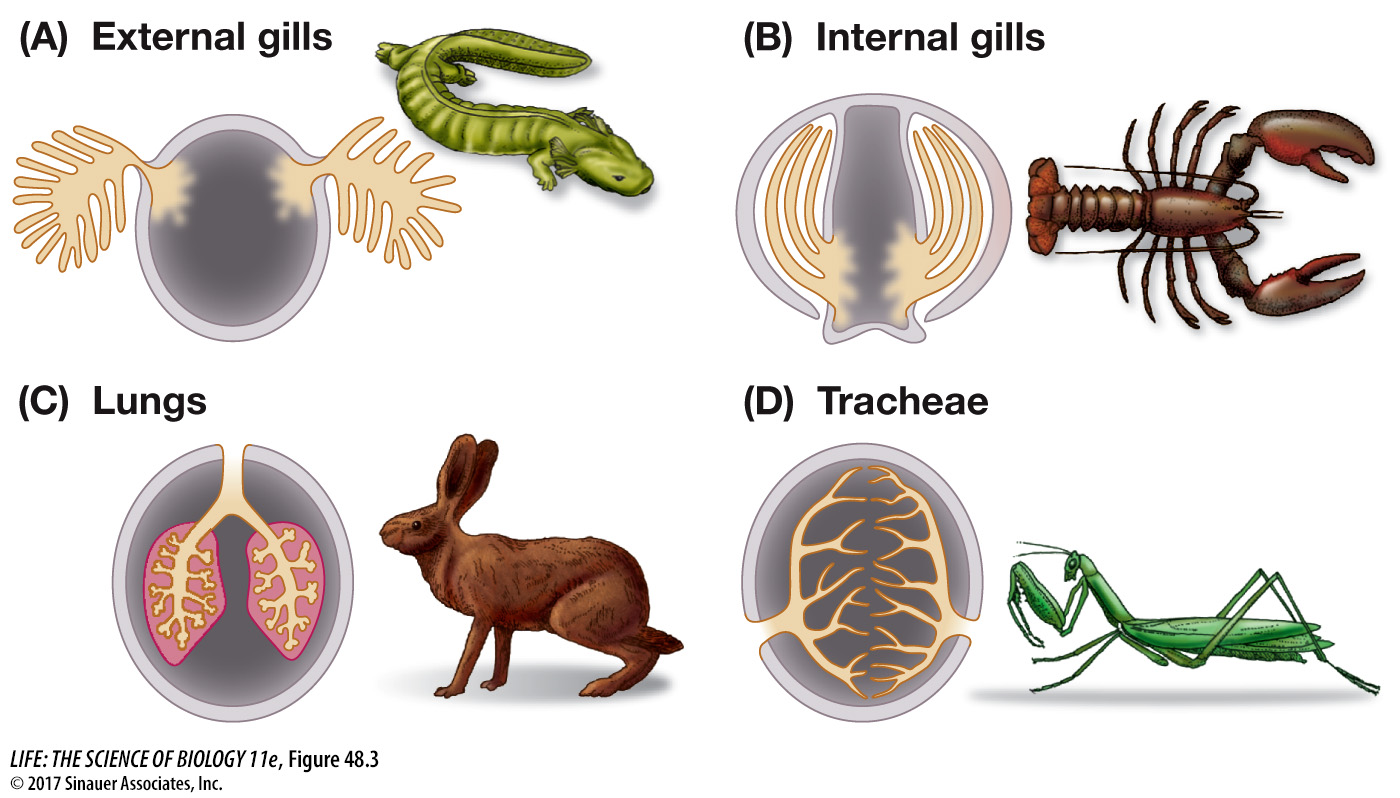Respiratory organs have large surface areas
A variety of anatomical adaptations maximize the specialized body surface areas (A) for respiratory gas exchange. Water-breathing animals generally have gills, and air-breathing animals have tracheae or lungs. Gills are highly branched and folded extensions of the body surface that provide a large surface area for gas exchange (Figure 48.3A; see also Figure 48.1C). Because gills consist of thin, delicate tissues, they minimize the path length (L) traversed by diffusing molecules of O2 and CO2. External gills are found in larval amphibians and in the larvae of many insects. External gills are vulnerable to damage and are tempting morsels for predators, so in many animals protective body cavities for gills have evolved. Such internal gills are found in most mollusks and arthropods and in all fishes (Figure 48.3B).

Figure 48.3 Gas Exchange Systems Large surface areas (tan in these diagrams) for the diffusion of respiratory gases are common features of animals. External (A) and internal (B) gills are adaptations for gas exchange with water. Lungs (C) and tracheae (D) are organs for gas exchange with air.
Lungs are internal cavities for respiratory gas exchange with air (Figure 48.3C). Their structure is quite different from that of gills. Lungs have a large surface area because they are highly divided, and because they are elastic, they can be inflated with air and deflated.
Insects have a respiratory gas exchange system consisting of a network of air-filled tubes called tracheae that branch through all tissues of the insect’s body (Figure 48.3D). The terminal branches of these tubes are so numerous that they have an enormous surface area compared with the external surface area of the insect’s body.
